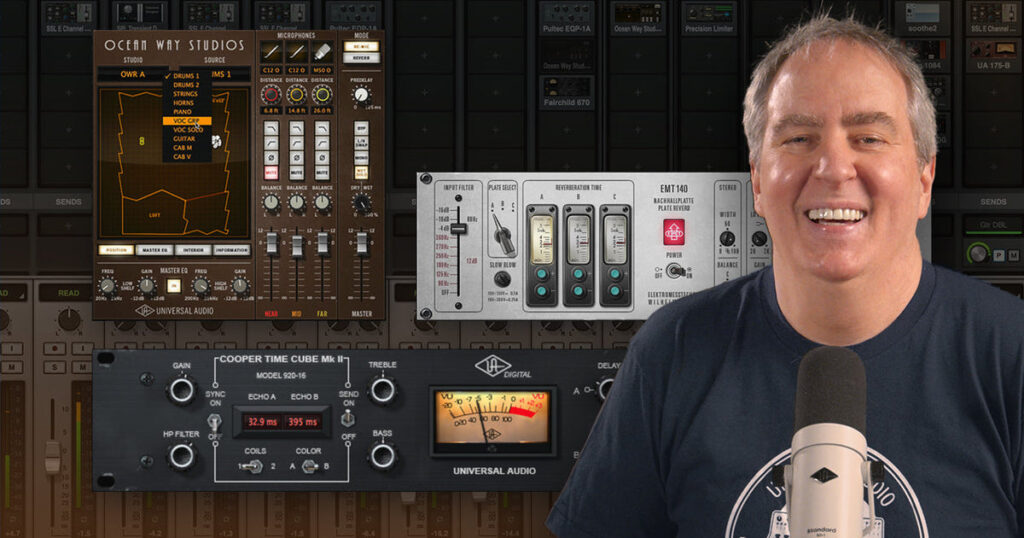Learn to add depth, space, and movement to your tracks.
In this UAD Spotlight tutorial, Drew Mazurek unveils his favorite time-based effects for vocals — including delays, widening tools, modulation, and reverb.
Whether you’re chasing classic tape slap from the Ampex ATR-102 Mastering Tape Recorder, subtle pitch-shifting with the AMS DMX Digital Delay & Pitch Shifter, or the vintage room sounds of Capitol Chambers, this is your step-by-step guide for getting vocals to melt into any mix.
Watch part one of our Vocal Mixing series ›
Step 1: Start with a Slap Delay
A go-to effect for adding space and width without washing out the vocal, a slap delay is often the first step in Drew’s time-based chain. He uses two main tools here:
Ampex ATR-102: Set to 7.5 IPS with the HF repro EQ dialed down, this creates a dark, wide stereo slap with subtle movement.
Cooper Time Cube MkII: For a brighter slap, Drew engages the high-pass filter to keep the vocal crisp and present.
“These are great for adding width and energy, even when you want the vocal to still feel dry and upfront.”
Step 2: Widen with Subtle Modulation
Widening effects can make a vocal feel bigger without crowding the mix.
AMS DMX Digital Delay & Pitch Shifter: With wet solo enabled, this plug-in delivers lush stereo widening without noticeable delay tails.
EP-34 Tape Echo + AMS DMX: Because the EP-34 is mono, Drew pairs it with the AMS DMX or the Precision K-Stereo Ambience Recovery plug-in to restore width and stereo detail.
“Adding stereo enhancement after a mono echo plug-in gives you the best of both worlds — character and space.”
Step 3: Use Reverb with Intention
When it comes to reverb, Drew leans on a few key classics, each with a clear purpose:
EMT 140 Plate Reverb: With the high-pass filter maxed and decay set short, Plate A adds high-end shimmer without drenching the vocal.
Capitol Chambers: For cinematic depth, this plug-in excels at placing vocals deeper in the soundstage without sacrificing clarity.
Lexicon 480L: Small Hall settings offer compact ambience. Bonus tip: follow the reverb with 1176 or 175B Compression to bring the tail slightly forward in the mix.
“Compression after a reverb is a great trick for pushing it just a little closer without increasing the level.”
Step 4: Add Realism and Texture
Some effects aren’t about space — they’re about realism or tonal enhancement.
Ocean Way Studios: This plug-in adds room mic realism, placing the listener “in the room” with the performer — especially effective in headphones.
AMS RMX16: Drew uses the non-linear algorithms here to create explosive, dry-feeling reverbs that expand the vocal without traditional wash.
“The AMS RMX16 is very cool when you want presence and power.”
Drew Mazurek
Bonus Tip: Stack Your Effects Thoughtfully
The real magic happens when you layer these tools together. Try combining a slap delay with a plate reverb, or a mono echo with a stereo widener. Each processor contributes its own dimension — making your vocal sound rich, polished, and alive.
“The key is balance,” explains Drew. “You don’t need one giant reverb — you need the right combination of small moves that add up.”
Want to explore these effects yourself?
Shop the full collection of UAD plug-ins for vocals and start crafting your signature sound today.
— UA Staff




